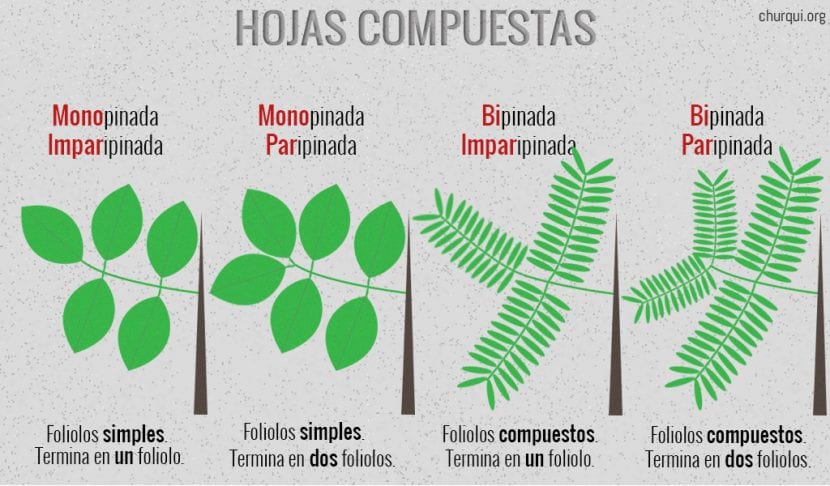
The leaves of plants can be of many forms: large or small, rounded, palmate, or rhomboid (among others), simple or compound, and a long etcetera. Within all these groups there is a term that is convenient to know: leaflet. Don't worry: as soon as you know its meaning you will see that it is not difficult to identify it 😉.
But other than that I'm going to tell you the different types there are. In this way, you will learn more about botany.
What is it?

When we speak of leaflets or pinnae we refer to each of the separate pieces into which the blade of a leaf is sometimes divided. When the blade is only formed by a single leaflet, or what is the same, when it is not divided, it is said to be a simple leaf; but when the opposite happens, the leaf is said to be compound.
Therefore, in practice the term leaflet is used more when referring to plants that have a divided blade.
What types are there?

Image - Churqui.org
There are many:
- Bifoliate: when the leaflets start from the same point.
- Bipinnate: also called pinnacle compound. It is when the primary leaflets divide in turn in the form of a pinna. If the latter are also pinnate, the leaf will be tripinnate.
- Imparipinnate: it is a compound pinnacle that has the central nerve ending in a leaflet and from which others sprout on both sides of it.
- Interruptipinnate: it is a compound pinnacle that has large leaflets and other small ones that are arranged alternately.
- Palmatic compound: it is a leaf with three or more leaflets with pinnate veins that arise from the same petiole.
- paripinnada: it is a composite pinnacle with all the leaflets arranged in pairs.
- Pinnacle compound: the leaflets have pinnate ribs and sprout on both sides of the stem.
- Trifoliate: it is a leaf composed of three leaflets.
What did you think of this topic? 🙂